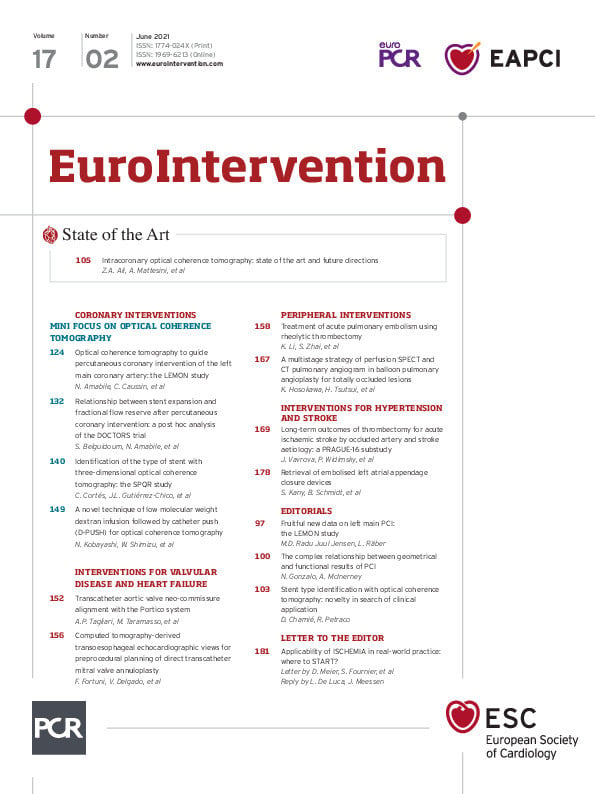We read with great interest the recent publication by De Luca et al1 assessing the applicability of the ISCHEMIA trial to an Italian registry of more than 5,000 patients with stable coronary artery disease (SCAD). The authors found that only 3.8% of patients in this cohort were “ISCHEMIA-Like”, suggesting a very limited applicability of the trial to routine clinical practice. Furthermore, the authors found that “ISCHEMIA-Like” patients presented a significantly lower annual risk of adverse events compared to SCAD patients not eligible for ISCHEMIA.
Since its publication, ISCHEMIA has generated intense debate in the cardiology community. Two important questions that have arisen are: what will the impact be on the routine clinical practice of interventional cardiologists? What role does percutaneous coronary intervention (PCI) now have, if any, in the management of SCAD?
To address the first question, we recently evaluated the applicability of ISCHEMIA to 1,000 consecutive PCIs performed in a Swiss university hospital2. After applying exclusion criteria from ISCHEMIA, only 9.1% of PCIs were found to be potentially eligible for ISCHEMIA, suggesting a minimal impact on our routine practice.
With regard to the second question, De Luca et al have provided the first large-scale evaluation of the applicability of ISCHEMIA to real-world patients. These results suggest that “ISCHEMIA-Like” patients represent a tiny proportion of real-world SCAD patients.
The authors rightly recognise the absence of stress testing in patients in the registry, automatically rendering the majority as “ISCHEMIA-Unclassifiable”, thus leading to a likely underestimation of the number of “ISCHEMIA-Like” patients. However, we question why the authors included all registry patients in an analysis of “stable CAD”, given that 67.5% of patients recruited to START were included only on the basis of an acute coronary syndrome (ACS) ≥30 days before enrolment? Although the definition of SCAD does vary in the literature, we feel that the inclusion of such patients is a bit of a stretch in the absence of additional clinical factors such as ongoing symptoms of ischaemia or positive stress testing. In line with this observation, a previous publication from START found that 73.2% of patients included in the registry had no angina at baseline, representing more than twice the proportion in ISCHEMIA3. As a result, we argue that the starting population for the study may not have been representative of real-world SCAD patients.
We applaud the authors for demonstrating the significantly better clinical outcomes of “ISCHEMIA-Like” patients when compared to those of “ISCHEMIA-Not Included/ISCHEMIA-Unclassifiable” patients. These results go some way to confirm the strong suspicion that patients included in ISCHEMIA were a lower-risk subgroup of SCAD patients, and thus possibly less likely to gain benefit from revascularisation. However, we expected a more thorough analysis of outcomes. Given that a major criticism of ISCHEMIA was the exclusion of higher-risk patients, we feel that the authors missed an opportunity to perform a similar analysis to ISCHEMIA which included these higher-risk patients. An analysis (e.g., propensity-matched) comparing the clinical outcomes of patients who received revascularisation plus optimal medical therapy (OMT) versus those who received OMT alone could have yielded some interesting data on the outcomes of real-world SCAD patients.
Overall, De Luca et al have provided some interesting data on the applicability of ISCHEMIA to real-world patients. However, there is a need for more observational data on the outcomes of SCAD patients, including those excluded from ISCHEMIA, in order to understand better how to translate the trial’s results into routine clinical practice.
Conflict of interest statement
The authors have no conflicts of interest to declare.
Supplementary data
To read the full content of this article, please download the PDF.

